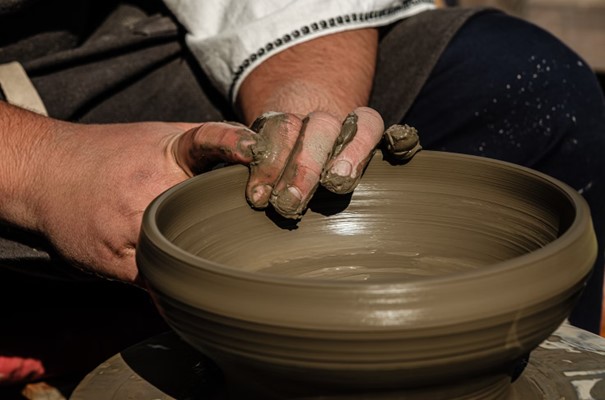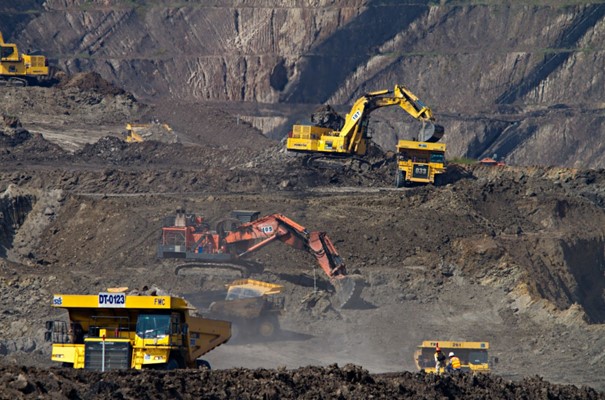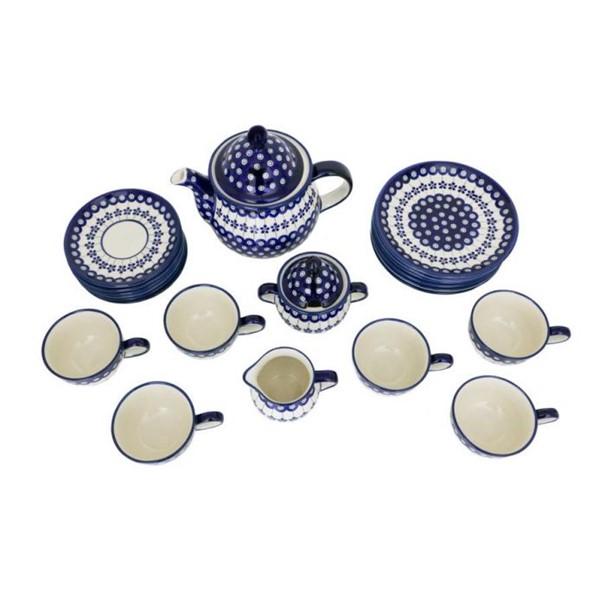The Environmental Impact of Making Polish Pottery

The Environmental Impact of Making Polish Pottery
Polish pottery is renowned worldwide for its unique designs, superior quality, and durable nature.
This traditional handcraft has become a significant part of Poland's cultural heritage and a source of pride for its makers. but have you ever wondered about its environmental impact?
In this article, we will explore the environmental impacts of Polish pottery and how pottery, in general, can be more sustainable and eco-friendly.
While pottery is one of the oldest art forms cherished by many as a sacred tradition, it’s also important to know and understand its potential environmental challenges.
By doing this, we can find ways to be more sustainable while at the same time preserving the cherished pottery tradition.
Key Takeaways
- The production of ceramics can harm the environment through mining, which destroys natural habitats and releases harmful pollutants.
- Ceramics production requires a significant amount of energy and water consumption, contributing to greenhouse gas emissions and water scarcity.
- The transportation of ceramic materials and products has a detrimental impact on the environment, contributing to carbon emissions and waste generation.
- Polish pottery is considered more eco-friendly compared to other ceramics due to its locally sourced materials, handmade production methods, and non-toxic glaze.
- While Polish pottery still has environmental concerns, such as energy consumption from kiln firing, handmade ceramics generally have a lower overall environmental footprint compared to mass-produced ceramics.

Photo from Zakladyboleslawiec
Is Ceramics Bad for the Environment?
We’ll start by discussing the elephant in the room: is ceramics bad for the environment? The answer is ceramics can harm the environment.
Here are the ways the production of ceramics causes harm to the environment:
Mining
Mining for the raw materials used in ceramics can significantly impact the environment.
This is because the process of extracting clays and glaze ingredients from the earth isn't renewable and can cause the destruction of natural habitats and landscapes. This can lead to the loss of biodiversity and harm ecosystems.
Mining rare coloring oxides like cobalt can also have negative consequences. It can result in unethical practices and further damage to the environment.
Heavy machinery and equipment used in mining also contribute to air and noise pollution, affecting both humans and wildlife.
Extraction of these materials can also release harmful pollutants into the air and water, including substances such as lead and barium.
These pollutants can have detrimental effects on human health and contaminate ecosystems, posing a threat to aquatic life.

Photo by Dominik Vanyi on Unsplash
Energy and Water Consumption
The production of pottery and ceramics has a significant environmental impact due to its high energy and water consumption.
Ceramics production requires a lot of energy, especially during the heating and firing process. This energy usage can lead to greenhouse gas emissions and air pollution, especially if non-renewable energy sources are used.
Most of the pottery and ceramic CO₂ emissions come from its use of gas and coal ovens. One study showed that on average, 74% of the carbon footprint of ceramics comes from the firing process.
Producing ceramics also requires a substantial amount of water for processing and cleaning. This can put pressure on water resources, particularly in areas already experiencing water scarcity.
Shipping
When considering the overall carbon footprint of ceramics production, the transportation of ceramic materials, whether as raw materials or finished products, has detrimental effects.
Shipping is the second-largest contributor to global carbon pollution, accounting for about 20.2% of the world’s total CO₂ emissions.
The long distances these materials travel result in increased fuel consumption and emissions. This contributes to climate change and further adds to the environmental impact.
The packaging used for shipping also has negative consequences. It generates waste and often involves using non-recyclable materials, which worsens the environmental footprint.

Photo by Venti Views on Unsplash
Is Polish Pottery Eco-friendly?

Photo from Zakladyboleslawiec
Ceramics have been used by humans for thousands of years, serving a multitude of purposes ranging from functional pottery to exquisite works of art.
However, as the environmental impact of various industries comes under scrutiny, the ceramics industry needs to adopt eco-friendly practices.
Polish pottery is known for its beauty and durability. But what about its environmental impact? Here are some reasons why Polish pottery can be considered more eco-friendly compared to other ceramics.
Locally-sourced
The clay used in making Polish pottery comes from the Boleslawiec region of Poland. Having most of its raw materials within the country, Polish pottery has lower carbon emissions for transportation than other ceramics whose materials are shipped from other countries.
Handmade
Polish pottery is also usually handmade, which is much more environmentally friendly than machine-made ceramics mass–produced in automated factories.
Handmade ceramics often rely on manual labor and traditional kiln firing techniques, which have lower energy requirements than factories that need significant energy to mass-produce ceramics.
Handmade ceramics like Polish pottery allow artisans to reuse materials in their studios. Unlike machine-made ceramics, handmade ones often involve a greater level of precision in producing the desired shapes and forms.
This process leads to less material wastage, which may produce more imperfections and require additional resources to correct or rework.
Unlike mass-produced ceramics, handmade pottery lasts longer, reducing the need for constant replacements and contributing to a less wasteful consumer culture.
Non-toxic
When making ceramics, it's important to avoid using toxic glaze materials. These materials can have harmful effects on both human health and the environment.
Fortunately, the glaze used in Polish pottery is free from lead and cadmium, making it safe for consumers and the environment.
Polish Pottery and its Energy Consumption
While we discussed why Polish pottery might be the eco-friendlier choice, that’s not to say Polish pottery is in the clear, either. Some traditional techniques used to make these ceramics still need fossil fuels.
Making Polish pottery generally includes the use of kilns. Kiln firing involves heating the pottery items to high temperatures to achieve the desired glaze and durability.
Traditional pottery kilns typically require significant amounts of energy, as they are often fueled by natural gas, coal, or wood.
The environmental effects of Polish pottery energy consumption are primarily linked to the generation of greenhouse gas emissions and the depletion of non-renewable energy sources.
To mitigate these effects, some pottery manufacturers are shifting towards cleaner energy sources like natural gas or renewable energy technologies such as solar or biomass.

Photo from Zakladyboleslawiec
Final Thoughts
While ceramics can hurt the environment due to energy-intensive production, handmade ceramics offer benefits that reduce their environmental footprint.
Handmade ceramics are created using traditional techniques and craftsmanship, which means less reliance on machinery and energy consumption compared to mass production. This helps to minimize the overall environmental impact.
Lastly, Polish pottery and the whole ceramics industry have been with humans for centuries. It is a form of art that not only showcases the creativity and skill of the craftsmen but also reflects the Polish people's culture, history, and traditions.
The intricate patterns, vibrant colors, and meticulous craftsmanship of Polish pottery make it highly sought after by collectors and enthusiasts around the world.











Validate your login
Sign In
Create New Account